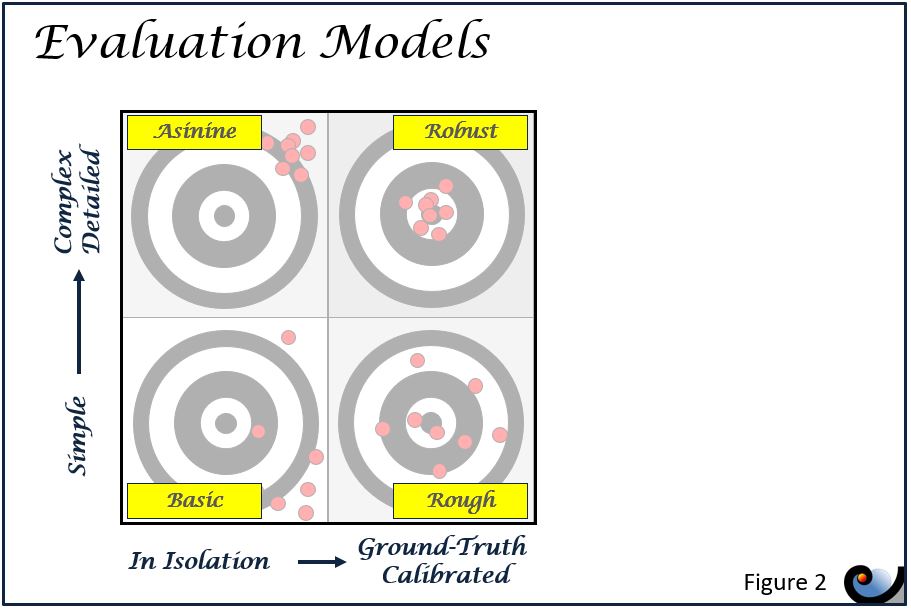When evaluating Prospects, it is important to understand where to focus your time, money and effort. The distinction between Accuracy and Precision (Figure 1) is a powerful concept that can help you find the right balance.
Quantitative Prospect assessment involves several moving parts with large uncertainty ranges. Just to mention a few, we might have a very poor understanding of where the hydrocarbon-water contact might be, what the reservoir thickness and quality is or what the reservoir actually contains (gas or oil or brine).
With multiple uncertainties, the largest component uncertainty will drive the minimum composite uncertainty of our prediction. So it makes sense to focus on reducing the largest uncertainty to increase the accuracy of our predictions. Unfortunately, this is not always understood and tremendous amount of effort is put into studies to improve our understanding of aspects we already know pretty well. These studies will result in improved precision of that particular aspect of the evaluation, but when taken into the overall context of our prospect understanding this is precision without the necessary foundation of accuracy and will convey a false impression of knowledge (top left corner in Figure 2).
One way of improving the accuracy of Prospect evaluation is to understand them in a wider geological context (as for example Play-Based Evaluation), which will allow us to better constrain the uncertainties of our parameters. Only once you have a reasonable accurate understanding of the opportunity is it worth the time and effort to improve the precision of the prediction by more elaborate work (and the inherently additional complexity needed to improve the precision, Figure 3). To quote Carveth Read (1848–1931) "It is better to be vaguely right than exactly wrong!"
We can keep ourselves honest and consistent by retaining this simple Accuracy versus Precision Matrix in mind, teaching us to focus on what matters most, with multiple benefits. By walking the fine line of balance defined by the matrix, you will increase your efficiency, while at the same time increasing the accuracy of your predictions. By reducing the complexity, you will also reduce the chance of confusion and miscommunications when conveying your results to others.
Understanding where we are in the Accuracy versus Precision Matrix is an essential ingredient of our GoExplore Philosophy. We try to find the right balance in our software tools, which are focused on accuracy and only add more precision (and the related complexity) if it improves the overall predictive capabilities of the application.


